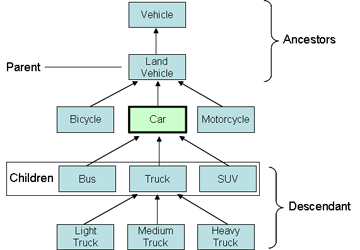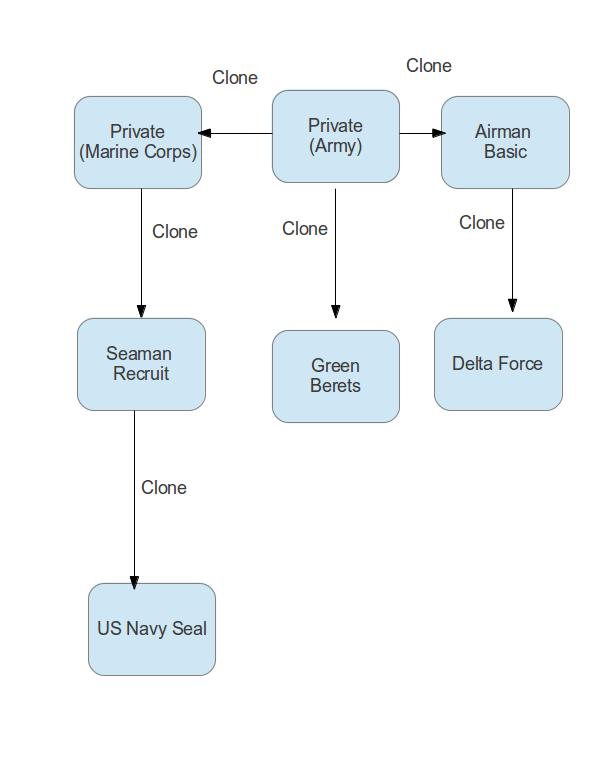CSC/ECE 517 Spring 2013/ch1a 1e pi
Inheritance
In object-oriented programming (OOP), inheritance is a way to reuse code of existing objects, or to establish a subtype from an existing object, or both
<Index>
Means of achieving inheritance
Classical Inheritance Objects are defined by classes, classes can inherit attributes and behavior from pre-existing classes called base classes, superclasses, or parent classes. The resulting classes are known as derived classes, subclasses, or child classes. The relationships of classes through inheritance gives rise to a hierarchy.

Prototype Based Inheritance A feature of object-oriented programming in which classes are not present and inheritance is performed via a process of cloning existing objects that serve as prototypes . Delegation is the language feature that supports prototype-based programming.
A simple example of Prototype Based Inheritance could be depicted as

.
This example shows soldiers belonging to different divisions as different objects. This sort of a relation can be better be represented as a prototype based inheritance than as a class-based one. If the relation used was the classical approach, then a separate class "soldier" would have to be defined as the base class from which the rest of the classes such as delta, green berets and navy seals would have to be defined as children classes. Also these would have been the children classes from which the object itself(probably a real soldier) would have to be instantiated. There is no reason to do so in this case as, each of these, intuitively suit more as an object(real life) than as a passive conceptual class. Besides, the classical approach would bring about a hierarchy among the objects when none exists.
Classical Inheritance v/s Prototype based inheritance
Object Creation :While in the case of the classical approach, objects need to be instantiated after defining the format of the class, in case of prototype based, a new object can be instantiated by simply creating a copy of/cloning an existing object. As in
Classical inheritance example class Vehicle { //properties }
class Car inherits Land Vehicle { }
class trucks inherits inherits Car { }
class mediumTruck inherits Truck { //properties }
Prototype based inheritance example
class Soldier { //properties }
Private = Soldier.new() GreenBeret.prototype = Private
GreenBeret.weapon=("H&K")
GreenBeret.training=("x months")
References
<references/>
http://en.wikipedia.org/wiki/Prototype-based_programming
http://en.wikipedia.org/wiki/Delegation_(programming)
http://en.wikipedia.org/wiki/Cloning_(programming)